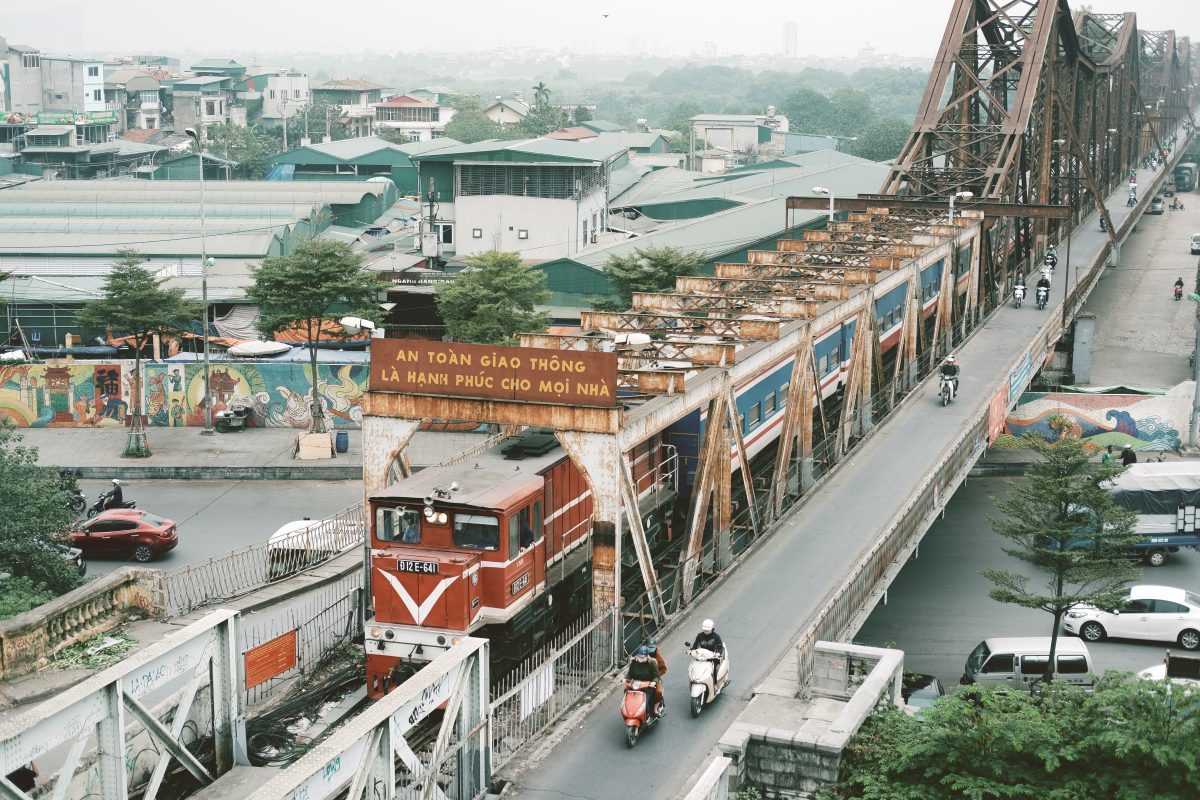How to Plan Your Kyoto Lazy Bird Tour
If you’re looking for an afternoon tour that includes some of Kyoto’s top attractions, consider the Lazy Bird Tour. This tour is ideal for travelers who might be struggling with jet lag and want to avoid an early morning start. In this guide, we will discuss how to plan your Kyoto Lazy Bird Tour and what to expect during your trip.Overview
The Lazy Bird Tour is a half-day tour that takes you to three of Kyoto’s top attractions–Arashiyama Bamboo Grove, Kinkaku-ji Temple, and Fushimi Inari Shrine. The tour is designed to be a relaxing and enjoyable experience, with a guide taking care of all the navigating for you.What’s Included
The Lazy Bird Tour’s all-inclusive package covers the transportation fare, guide fare, and food and drink for the tour. The meeting point for the tour is Kyoto Station, where you will be picked up at 12:45 PM. The tour ends back at the meeting point.What to Expect
The tour includes three stops, each of which provides a unique perspective on Kyoto’s culture and history.Arashiyama
The first stop on the tour is the Arashiyama Bamboo Grove. A visit to this serene bamboo forest is a must-do for any traveler in Kyoto. Strolling through the bamboo makes for a peaceful and calming experience. You’ll find the air is cooler here than in other parts of the city, making it a fantastic escape from the summer heat.Kinkaku-ji Temple
Next, the tour takes you to Kinkaku-ji Temple, also known as the Golden Pavilion. This Zen temple dates back to the 14th century and is a UNESCO World Heritage site. The pavilion itself is coated in gold leaf, giving the temple its glistening appearance. The surrounding gardens are also breathtaking and make for a memorable visit.Fushimi Inari Shrine
The final stop on the tour is Fushimi Inari Shrine. This Shinto shrine is famous for its thousands of vermilion torii gates, which form a tunnel-like pathway up the mountain. The trail can be quite crowded at times, but the views from the top are worth the effort.Additional Info
The Lazy Bird Tour is a popular option, so it’s best to book in advance. Confirmation of your booking will be received at the time of the reservation. Be sure to wear comfortable shoes as there will be a bit of walking involved at each of the stops.Book Your Tour Now
The Lazy Bird Tour is a fantastic way to see some of Kyoto’s top attractions without the hassle of navigating the city yourself. With an afternoon start time, it’s also ideal for travelers who want a little extra sleep in the morning. Book your tour at this link and get ready for an unforgettable experience in Kyoto.
Frequently Asked Questions About Kyoto
Kyoto is one of the popular tourist destinations in Japan known for its beautiful gardens, temples, and historic structures. It is also famous for its cultural heritage, traditional handicrafts, and cuisine. As a result, many visitors have a lot of questions on their minds before they travel. In this FAQ, we’ll answer some of the most frequently asked questions about Kyoto.1. What is the best time to visit Kyoto?
Kyoto is beautiful throughout the year, with each season having its unique attractions. The best time to visit Kyoto is during the spring when the cherry blossoms are in full bloom. This usually occurs from late March to early April. The autumn season is also an excellent time to visit Kyoto when the leaves change color, creating a beautiful scenery. The temperature is pleasant during these seasons, making it ideal for sightseeing.2. How long should I stay in Kyoto?
The ideal length of time to stay in Kyoto depends on what you want to see and do. If you only have a few days, you can visit the must-see attractions like Kinkaku-ji (Golden Pavilion), Gion District, Fushimi Inari Taisha Shrine, and Arashiyama Bamboo Forest. However, for a more relaxed experience and to visit less touristy places, it is recommended to stay in Kyoto for at least five days.3. What is the best way to get around Kyoto?
Kyoto has an excellent public transportation system, making it easy to explore the city. The best way to get around the city is by using buses and trains. The Kyoto City Bus is the most convenient mode of transportation for sightseeing. You can purchase a one-day bus pass from the bus driver or at Kyoto Station. Trains are also available with the JR Pass, which allows unlimited travel on JR lines.4. What should I wear in Kyoto?
Japan is a conservative country, and it is essential to dress appropriately, especially when visiting religious sites. Visitors are encouraged to dress modestly, with their shoulders and knees covered. Comfortable walking shoes are also important as there is a lot of walking involved when exploring the city.5. What are the must-visit temples in Kyoto?
Kyoto is known for its many temples and shrines. The following are the most popular must-visit temples in Kyoto:- Kiyomizu-dera
- Ginkaku-ji (Silver Pavilion)
- Kinkaku-ji (Golden Pavilion)
- Byodoin Temple
- Ryoan-ji
- Nanzen-ji
- Chion-in
6. What is the traditional Japanese cuisine in Kyoto?
Kyoto has a unique culinary culture that is influenced by its history and tradition. The following are some of the traditional Japanese dishes you can try in Kyoto:- Kaiseki (a traditional multi-course Japanese meal)
- Tofu dishes
- Soba noodles
- Kyoto-style sushi
- Shojin Ryori (Buddhist vegetarian cuisine)
7. Can I use credit cards in Kyoto?
Most major credit cards are accepted in Kyoto, especially at tourist facilities such as hotels, restaurants, and shops. However, it is always better to carry some cash, especially in smaller establishments or when using public transportation.8. Are there any festivals in Kyoto?
Kyoto hosts many festivals throughout the year, including the following:- Gion Matsuri (July)
- Jidai Matsuri (October)
- Aoi Matsuri (May)
- Daimon-ji Gozan Okuribi (August)
9. What are the nearby attractions of Kyoto?
Kyoto is close to several other scenic destinations, some of which include:- Nara (a city rich in cultural heritage and famous for its deer park)
- Himeji (home to the stunning Himeji Castle, a UNESCO World Heritage site)
- Osaka (known for its bustling city and delicious street food)
- Kobe (famous for its delicious beef and beautiful scenery)
10. Is it safe to travel to Kyoto?
Kyoto is generally a safe place to travel to. However, visitors are encouraged to take standard precautions like being mindful of their belongings, avoiding unlit and unfamiliar areas at night, and not leaving valuables unattended. Emergency services like the police and medical services are readily available in case of any emergencies.Book Your Tour Now
Kyoto is a beautiful city with a rich cultural heritage and many attractions to see and experience. We hope this FAQ has answered some of your questions about visiting Kyoto and will help you plan your trip. Remember to plan adequately, pack appropriately, and respect the customs and traditions of the city. Happy travels!
How to Spend Your Time as a Tourist in Kyoto
Kyoto, Japan, is a city full of cultural landmarks and historical sites dating back centuries. It’s a perfect destination for travelers who want to experience the traditional Japanese way of life while enjoying modern amenities. For those planning to visit Kyoto, Japan, it can get overwhelming to plan an itinerary. That’s why we’ve created this guide that will provide you with a detailed overview of how to spend your time as a tourist in Kyoto.Getting Around Kyoto
Before we dive into the top things to do and see in Kyoto, let’s talk about getting around the city. Kyoto’s public transportation system is comprehensive, efficient, and easy to use, which consists of trains, buses, and taxis. The best option for tourists is to buy an IC card, which allows you to access all forms of transportation in Kyoto, Japan. You can purchase one at any train stations, convenience stores, or bus terminals in the city.Top Attractions to See in Kyoto
There are numerous temples, shrines, gardens, and historical landmarks in Kyoto. Here are some of the must-visit places to include in your itinerary.Kinkaku-ji Temple
Kinkaku-ji Temple, also known as the Golden Pavilion, is one of Kyoto’s most iconic landmarks. The temple is made of gold leaf, reflecting in a tranquil pond, offering a stunning sight. The garden surrounding the temple provides a peaceful and serene atmosphere that is pleasant to stroll around.Kiyomizu-dera Temple
Kiyomizu-dera Temple is another must-visit temple located in eastern Kyoto. The temple offers stunning views of the surrounding landscape, including Kyoto Tower and the city’s skyline. The temple’s main hall features a wooden balcony, which has become a landmark symbol of Kyoto.Fushimi-Inari Taisha Shrine
The Fushimi-Inari Taisha Shrine is a famous Shinto shrine located in Southern Kyoto. The shrine’s most iconic feature is its Senbon Torii, a series of thousands of bright orange torii gates that line the path up to the main shrine. Visitors are always amazed by the vastness and beauty of the torii gates.Gion District
For a glimpse into traditional Japanese culture, a visit to the Gion District is a must. The Gion District is famous for being the center of traditional geisha culture in Japan. Visitors can try traditional tea ceremonies, watch geishas perform traditional dances, or stroll around enjoying the area’s traditional architecture and scenery.Arashiyama Bamboo Grove
Located in western Kyoto, Arashiyama Bamboo Grove is a peaceful retreat from the hustle and bustle of the city. As you walk along the path surrounded by towering bamboo trees, the sounds of the bustling city become distant, and the serene and tranquil environment takes over.Food Experiences in Kyoto
Apart from the cultural and historical landmarks, Kyoto offers an unforgettable culinary experience. Here are some of the must-try dishes and food experiences in Kyoto:Kaiseki Cuisine
Kyoto is famous for its kaiseki cuisine, a traditional multi-course dinner prepared with the finest seasonal ingredients. Each dish is skillfully created, offering a unique blend of flavors and textures. Some of the best places to try kaiseki cuisine are Gion Nanba and Kikunoi.Matcha Green Tea
Kyoto is also known for its lush tea gardens, which provide high-quality matcha green tea. Visitors can participate in tea ceremonies or try matcha desserts, such as matcha ice cream, which are popular in Kyoto.Nishiki Market
The Nishiki Market in central Kyoto is known as the kitchen of Kyoto, as it offers some of the freshest and most flavorful produce in Japan. Visitors can try different street food stalls and get a glimpse of everyday local life.Book Your Tour Now
Kyoto, Japan, is a city filled with history, culture, and beauty. Visiting Kyoto will offer a unique and unforgettable experience, especially if you are interested in traditional Japanese culture. Make sure you include these must-visit places in your itinerary, try the unique food experiences, and immerse yourself in the traditional Japanese way of life. Don’t forget to plan the trip in advance, as there are a lot of places to visit and explore. With proper planning and guidance, your trip to Kyoto will be memorable and life-enriching.Table of Contents

